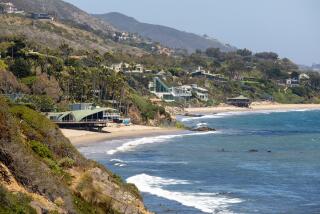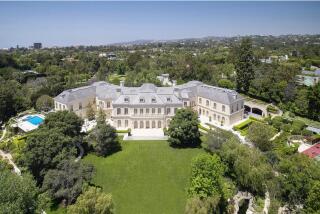The global rich are snapping up British country estates to isolate poshly
Bowden Park estate is a “Downton Abbey”-fueled vision: a 15,900-square-foot, 18th century mansion set amid 22 acres of manicured gardens and 1,400 acres of farmland in Wiltshire, which is about a two-hour drive west of central London.
Unlike Highclere Castle, the much larger and older real-life estate used as the centerpiece of the blockbuster TV show, Bowden Park is for sale, listed last month for 35 million pounds, or about $46.4 million.
Despite what the Savills listing describes as “outstanding interiors” and 13 other homes that come with the estate, the property probably would have sat on the market in any other year.
“We [hadn’t] been able to launch a property and say to the owner confidently, ‘We can sell this in three months,’” said Crispin Holborow, country director of Savills’ Private Office. Last year, for instance, just one country estate sold for more than 15 million pounds (about $20 million), according to Savills data. The previous year, only five sold.
But thanks in large part to COVID-19-related lockdowns, a staggering 19 country estates in Britain have sold or are under offer for over 15 million pounds in 2020, according to Savills.
Bowden Park estate, in other words, has suddenly entered a seller’s market. “They’re coming in thick and fast,” Holborow said.
For years, the country house market was in what brokers referred to as a buyer’s market — what everyone else referred to as a rut. High maintenance costs, increasingly high taxes and uncertainty over Brexit diminished country homes’ allure.
“The marketplace for country houses last hit its highest in 2007, early 2008 — and then, that summer and autumn, there was a crash,” Holborow said. “Ever since then, the country market has been limping along.”
Homes in the “super-prime” market weren’t the only ones in a slump. So were country houses of the merely wealthy, the “prime” market that generally encompasses houses from 2 million pounds to 10 million pounds, which works out to $2.6 million to $13.3 million.
By the end of 2019’s third quarter, the market had seen more than five straight quarters of price declines, according to a report by real estate consultant Knight Frank. Going into 2020, prices were about 20% below their peak in 2008.
While prime-market prices remain comparatively stagnant (up 2.3% this year, according to a November report by Knight Frank), volumes have skyrocketed, said Edward Rook, head of the consultancy’s country department.
From May 13 to June 24, for instance, the number of accepted offers for prime-market country houses was 182% higher than the five-year average, according to Knight Frank; all price brackets in the period were 64% higher than the same five-year average.
Mirroring trends in U.S. markets like Los Angeles, San Francisco and New York, wealthy London residents have begun to reassess their urban lifestyles, Rook said. “With COVID, life has changed dramatically, and people have [begun] to look at things a different way.”
Suddenly, second homes are becoming primary homes and buyers are willing to look farther afield and endure longer commutes, Rook said. “Instead of having a large house in London and maybe a cottage in the country, they’re reversing that and having a smaller apartment in London and a principal residence in the country,” he said.
Super-prime estates, however, remain “very much a second-home market” with wealthy individuals looking to pick up another property.
Holborow estimated that only about 50% of purchasers are British nationals. Many of the other high-net-worth shoppers come from Asia or the Middle East, and most already had a base in London.
During London’s summer lockdown, “it’s quite a sobering feeling, where you’re sitting in your lateral flat, in air conditioning, and you’re looking at your friends sitting in glorious sunshine on Instagram,” Holborow said. “These are normally people who would jump on their plane and go,” but with borders shut down, they had nowhere to go to.
“All of that” he said, “has ended with a surge in buyers.”
James Tarmy writes for Bloomberg
More to Read
Sign up for Essential California
The most important California stories and recommendations in your inbox every morning.
You may occasionally receive promotional content from the Los Angeles Times.





